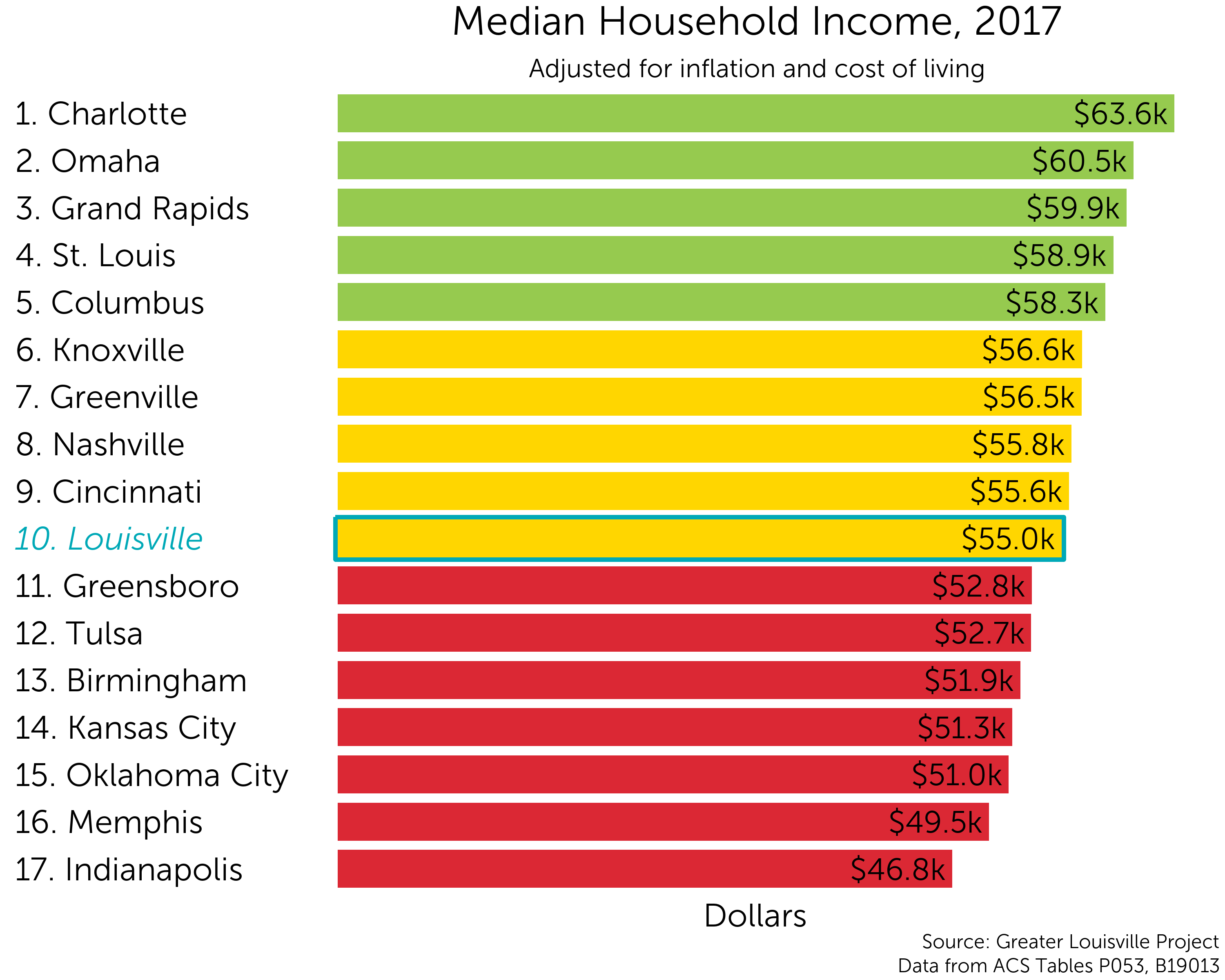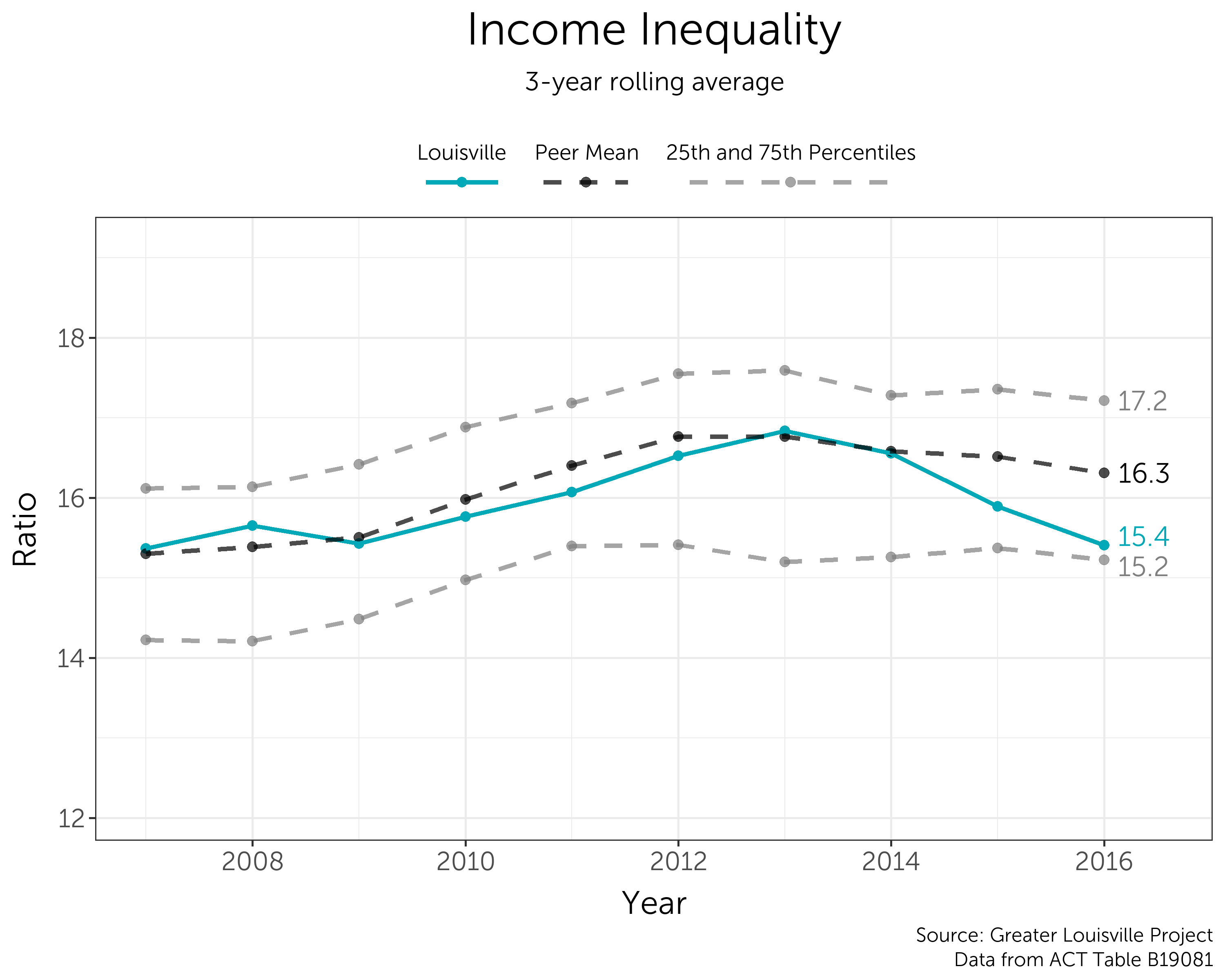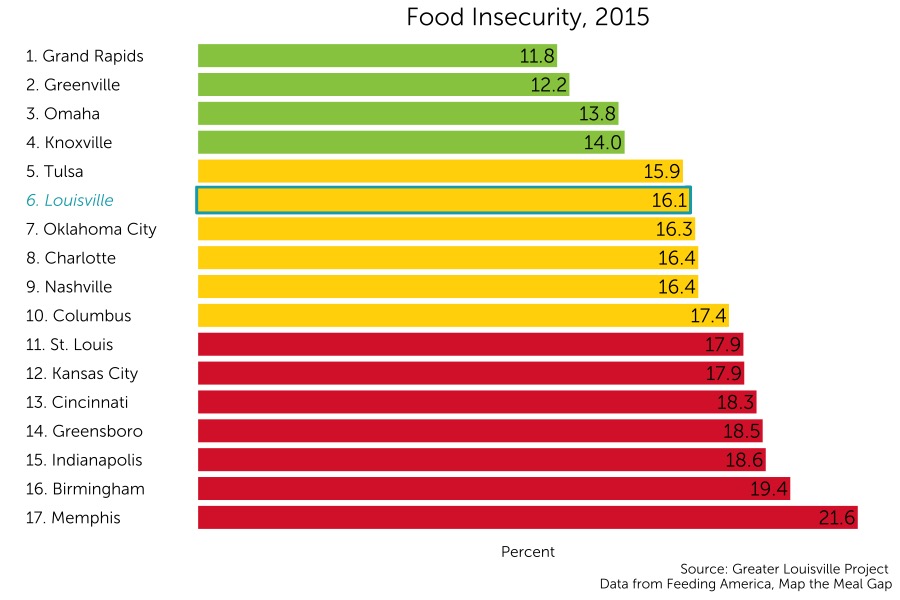Median Household Income
Median household income is an economic indicator commonly used as a proxy for quality of life. This metric is also often used to determine if residents in a given location are able to afford the cost of living of residing in that area. In conjunction with per capita income, median household income is used to determine the wealth of a given region. This metric includes both part-time and full-time workers.














